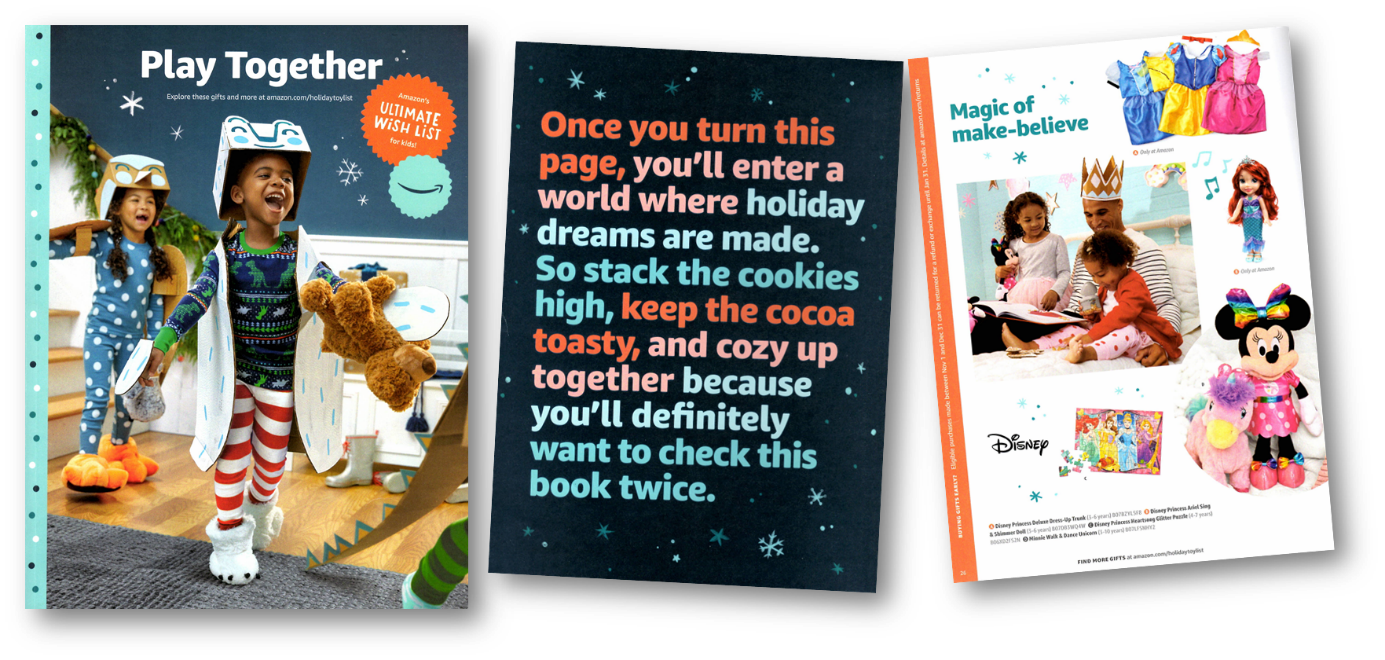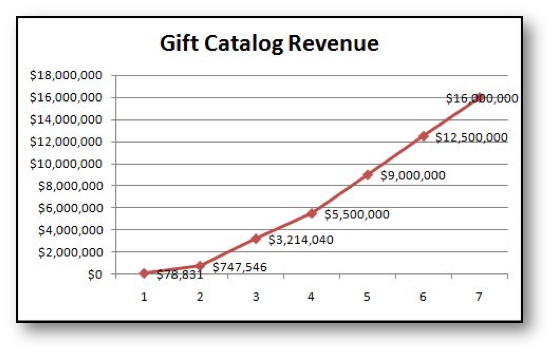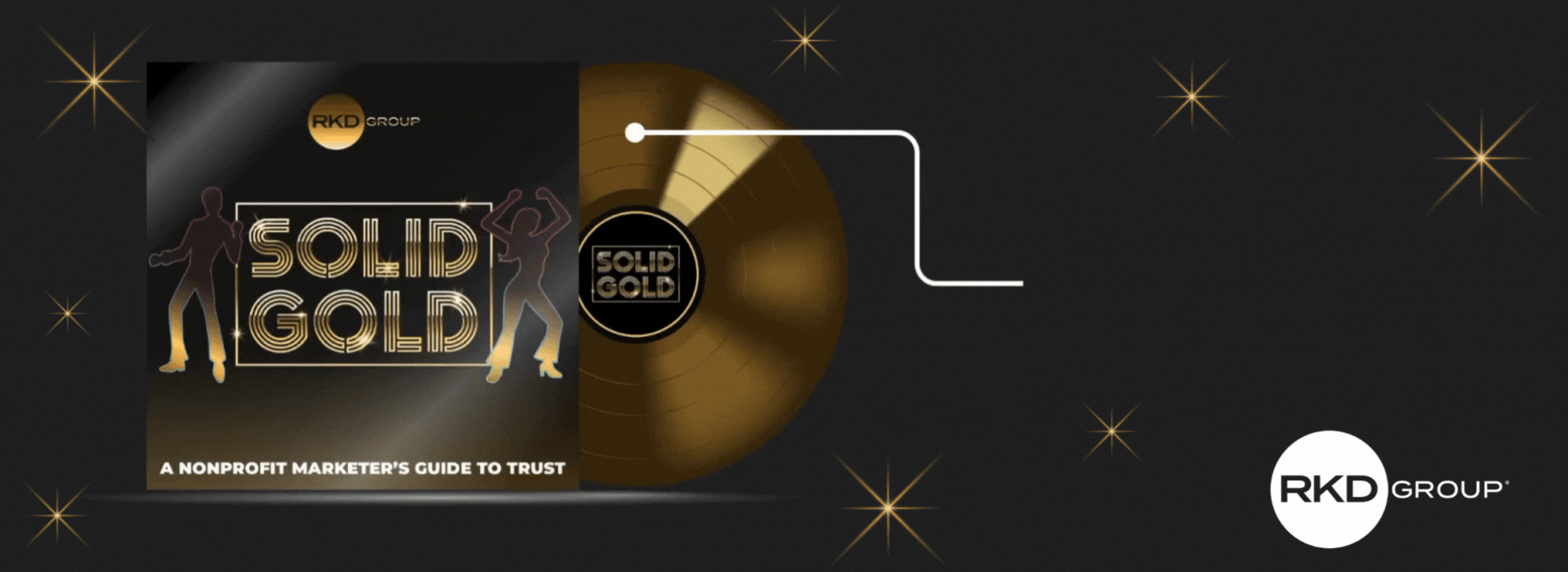You might be thinking that interest in gift catalogs fell off years ago, with Sears’ bankruptcy in 2018 being the final death knell. But the truth is they’re still alive and kicking, and we’re here to discuss how this form of symbolic giving can be a big boost for many nonprofit organizations.
Why are gift catalogs so beneficial? It’s all about building a diverse, multichannel fundraising program that is sustainable for the long haul.
Nonprofits need to find new ways to bring in donations, and symbolic giving can be a fantastic source of additional revenue. Symbolic giving is a way to showcase the essence of your mission in the form of several “products” incorporated into a multi-page alternate giving catalog.
If you rolled your eyes reading that, you probably have some preconceived notions about gift catalogs—and they’re probably wrong. In fact, let’s dispel the four most common myths we come across with nonprofit gift catalogs:
Myth #1: Nobody looks at gift catalogs anymore.
This might be the most common myth as so many people think that gift catalogs are antiquated and outdated.
We have Amazon, so who needs gift catalogs, right?
Well, Amazon does. The online retail giant prints a hefty 90-page catalog for the holidays that is fun, colorful and engaging.

And Amazon’s not alone. Countless major brands across the globe continue to publish annual gift catalogs and send them out in the mail.
Why do they choose print gift catalogs instead of just online catalogs? Because they provide an experience and a connection – exactly what nonprofits are looking to create with donors.
Brooke Lawler captured the essence of a gift catalog best in an op-ed for Media Post. She detailed the excitement of her 3-year-old son upon discovering his first Target catalog.
“The catalog proved to be a window into possibilities,” she wrote. “One glossy print circular opened my son’s eyes to new things he didn’t even know existed. It was a consumer teaching tool that blew his little mind.”
For Lawler, it was a stark reminder of the power that low tech can play in our consumer decisions.
“Catalogs give us control over our consumer experience,” she continued. “Our eyes can go wherever they want, and our fingers decide if we stay on a page or move on. … That is the beauty of print. It gives us the ability to control the intake of information and interact with the experience on our own terms.

”It’s about more than just transactions. Gift catalogs give people inspiration, and they create a one-on-one dialogue with consumers.
And they’re most certainly not dead.
Myth #2: We don’t have a goat to showcase.
When people think of nonprofit gift catalogs, most conjure up images of international relief organizations like Heifer International that feature a goat on the cover. I’ve traveled around the world and taken part in photoshoots where children have goats on their shoulders, so I understand the power of that image.
But an iconic symbol like a goat is not essential to success. You simply need to figure out the essence of the services you provide and how you can turn those into tangible offers for your audience.
All in all, you need about 20 items, and they should be items donors can easily connect to your mission.
The Centre for Addiction and Mental Health wasn’t sure what to promote to highlight their mission. We determined the essence of their gift catalog needed to express freedom and release from mental anguish and suffering.
Therefore, each product is a “gift of light” that brings a message of happiness, comfort, smiles or connecting with others.

Even those who have a goat can find new ways to connect with donors.
We’ve helped Save the Children create their catalog for years, and it typically features a child with a goat on the cover. But we wanted to try something new in 2019 based on a growing area of interest for them.
We decided to showcase a smiling girl in a classroom to capture the essence of the education they provide for young women across the world. The message is uplifting and inspiring, offering donors the ability to “educate a girl and show her anything is possible.

”It’s important to note that gift catalogs are not a good solution for every nonprofit. We typically sit down with clients to discuss how symbolic giving can fit into their organization and what their “goat” can be.
Myth #3: Gift catalogs will cannibalize revenue in other channels.
Some fear that print gift catalogs will take revenue away from direct mail, or that online catalogs will hurt their digital campaigns in December.
But symbolic giving actually sits on top of your year-end fundraising strategy to offer additional revenue. That’s because, at their core, nonprofit gift catalogs solve a donor dilemma: holiday shopping.
Tired of getting Aunt Jane a pair of pajamas or a gift card to Subway every year? Why not give her the gift of transforming someone’s life? That will certainly be more memorable.
They also position your organization in its best possible light. Direct mail and digital channels typically showcase the “need” for help, while gift catalogs showcase the solution. Instead of showing hungry children, for example, they show happy, smiling faces.
Gift catalogs offer a “wow” factor for donors while also helping them check off their holiday gift list. That’s why donors love them.
In fact, those who support nonprofits through catalogs are great donors with very high retention rates and large average gift sizes.
A recent audit of one client revealed that donors who give through catalogs in addition to other channels have over 20% higher annual value and twice the renewal rate compared to non-catalog givers. And their digital catalog givers retained 166% more than non-catalog donors.
And if that’s not enough reason to consider them, try this chart:

Those are the real numbers of one of our clients. We started their gift catalog from scratch, and it grew from $78,000 in Year 1 to $16 million by Year 7.
Who can say no to that kind of additional revenue.
Myth #4: Gift catalogs won't work for us. We've tried it before.
How does the saying go? If at first you don’t succeed, give up and never try again? That doesn’t seem quite right.
Sure, you may have tried a gift catalog before, but …
- Did you follow industry best practices and do it correctly?
- Did you have both a print and an online catalog working in unison to create a diversified fundraising effort?
- Did you build a holiday campaign with multiple mail drops, beginning in October?
- Did you promote it with digital media and on your website?
- Did you create an immersive customer journey with original photography, videos and recipient cards?
For a gift catalog to be successful, it truly needs to be a multichannel campaign with its own set of metrics. On top of that, there’s a real science to building the catalog itself (which we’ll dive into another time).
Ultimately, symbolic giving is a great way to diversify your fundraising revenue and build upon your current program. You can start by asking yourself if you can see a gift catalog as an “on top of” strategy.
And if you’re struggling with the idea of how to develop “products” that showcase your mission, reach out to us at contact@rkdgroup.com. We can help you determine whether gift catalogs would be a good fit for your organization.






Leave a comment: